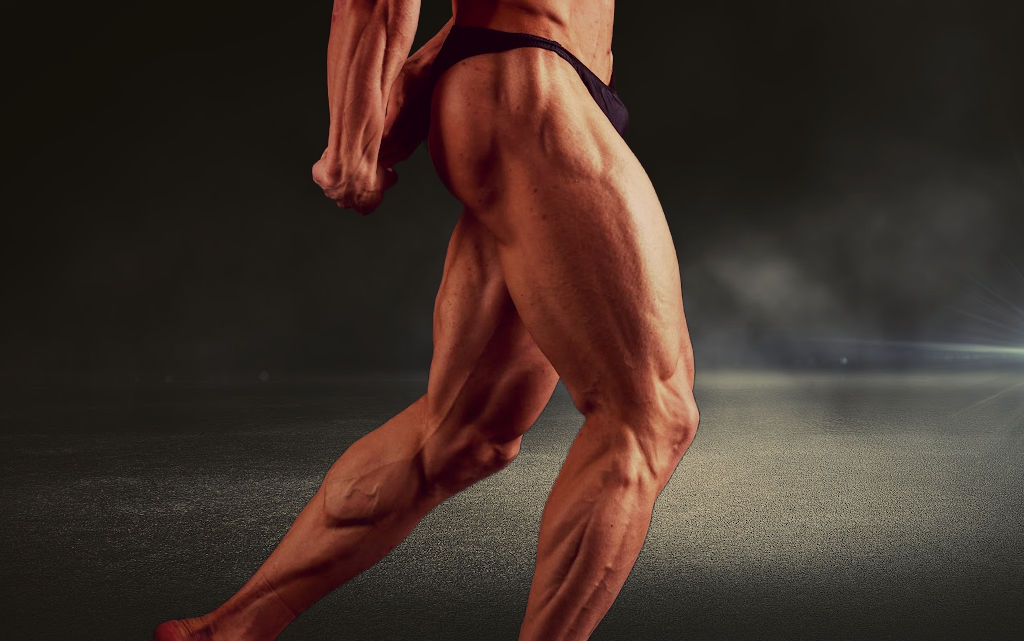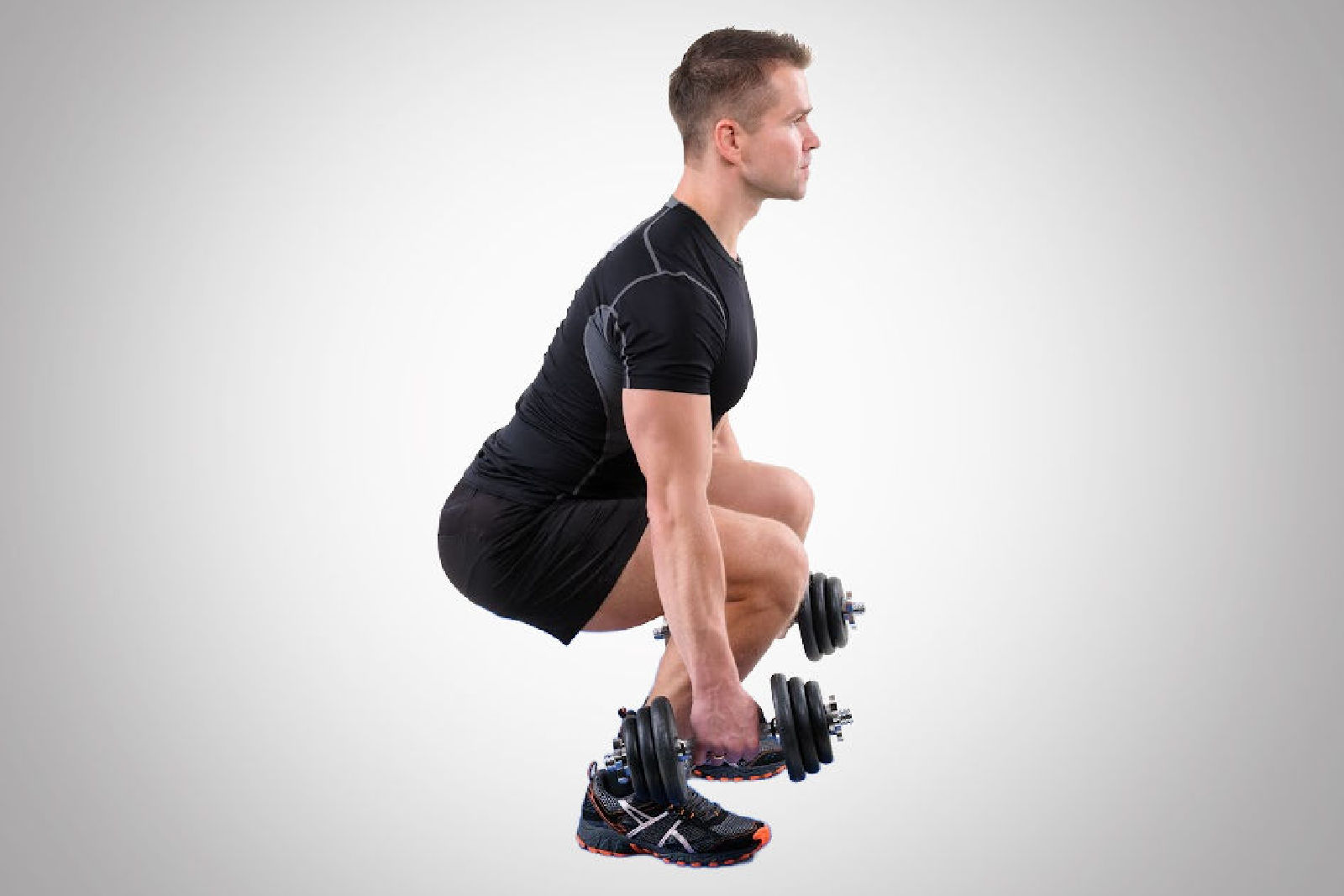
Build Your Quads With Dumbbell Hack Squats
While the hack squat is an excellent exercise for strengthening your lower body, it’s not always accessible due to the need for specialized machines.
This can be a particularly difficult challenge to try to replace those sorts of machines and their movement patterns if you’re setting up a home gym where space and budget are limited.

If you’re looking for a straightforward way to engage and develop muscular growth in your quadriceps and do a hack squat without a machine, the dumbbell hack squat is an excellent alternative.
This variant of the traditional squat targets your quads more effectively and arguably more directly, making it ideal for those who have some of the challenges mentioned.
Enter The Dumbbell Foam Roller Hack Squat!
In this guide, we’ll walk you through the steps to perform a particularly effective dumbbell hack squat with correct form, using a foam roller, and will detail which muscles are engaged, and explore the benefits you can expect from integrating this powerful exercise into your routine.
The Muscles Worked
Dumbbell hack squats, with or without the foam roller will work the major muscles that any squat will work, namely the quadriceps, hamstrings, and glutes, but does focus on greater quad emphasis.
Benefits Of Foam Roller Hack Squats
- Portability and versatility. Can be done in the home, on the road or in a limited home gym.
Less stress on the lower back. - Less shearing forces on the knees and patterns proper knee flexion mechanics.
- Accommodates a fairly wide range of foot placement (forwards, narrow vs wide, toe positioning).
- Allows for elevation of the heels to target lower quads and the VMO/Vastus Medialis Oblique group.
- Sliding up the wall makes it easier to control the cadence of the movement and balance.
Limitations Of This Movement
- The amount of resistance is largely limited by one’s grip strength (although this can be mitigated by using lifting straps)
How to Perform the Dumbbell Hack Squat With a Foam Roller
- Determine where your most comfortable foot placement should be (width, how far out from under you)
- Set up the dumbbells on the floor slightly outside of where you will place your feet (if using heavy dumbbells, they can be placed on some shallow steps or boxes)
- Putting your feet in position, push your butt into the wall and place the foam roller into the spot where your backside meets the wall
- Bending slowly with a neutral spine, pick up the dumbbells while pressing back into the foam roller
- Keep your upper body rigid and upright throughout the movement
- Descend into a full squatting position to where the thighs are slightly below or at parallel to the floor and maintaining pressure against the roller and the wall
- Control the eccentric descent, preferably to a 3-4 second count, creating tension through your legs and core. You can use the “one, one thousand, two, two thousand” method while counting in your head to approximate 3-4 second negatives
- When reaching the bottom of the movement, feel yourself pushing the floor away with your feet, pushing through your heels and center of the feet
Note: if you find you have poor ankle mobility, you can elevate your heels on a 1”-2” wedge or block.
How to Increase The Intensity
Using the 1.5 rep method, when reaching the bottom of the movement, rise up only 1/2 way and then slowly descend back to the bottom before fully rising. Count that as one rep. This is a very old technique that has been around (that I know of) since the 1970s.
You can also use a resistance band placed around the upper back and under your feet to make the lockout more difficult. Although resistance bands sort of cheat you out of the eccentric, you have that part covered by controlling the negative descent of the movement.
Also, do not come to a complete lockout at the top of the movement, maintaining continual tension on your quads.
What Is The Optimal Rep Range?
Traditionally we would look at since the goal here is hypertrophy, the rep range should be higher starting at 8 reps and maybe as high as 15.
A better approach would be to time each rep, making it last at least 40 seconds and preferably 45-60 seconds.
If using that 1.5 rep method as explained above, one which is brutally effective, all you have to think about really is: form, timing of the eccentric (again, 3-4 seconds down) and set duration - and not bother with counting reps!
